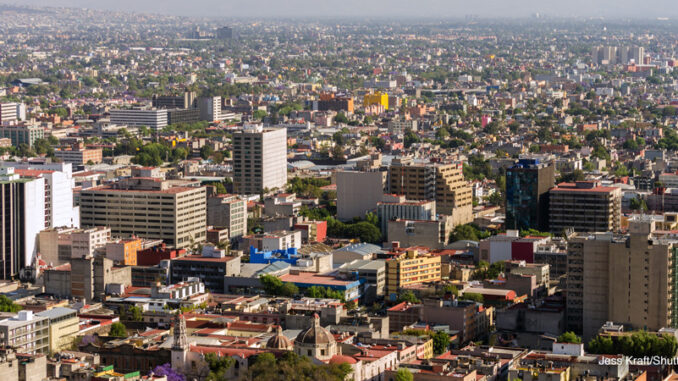
Puerto Rico Post-Maria
Last week, Puerto Rico was devastated by Hurricane Maria. Roofs were swept away and roads destroyed. The death toll currently stands at 16, but is likely to rise because many remote provinces haven’t been able to submit casualty reports yet. A week after the disaster, 60 percent of the island still has no water, and 100 percent of the island remains without power. The lack of power also means there is no access to communication, sewers, refrigeration, or many other basic necessities. What’s worse, it will likely take months to rebuild the electrical grid and restore power to everyone. Hurricane Maria also destroyed the agricultural industry, an estimated $780 million in crops. This means that for the foreseeable future, all basic food supplies will have to be flown or shipped in. And in a country where 45 percent of the population was already living below the poverty line, this is especially devastating.
Congress insists that it is responding as rapidly to Hurricane Maria as it did after Hurricanes Harvey (Texas) and Irma (Florida). The problem is, because Puerto Rico is an island, food and water and other critical supplies have to be either flown or shipped in. The island’s airfield is damaged, many shipping ports remain closed, and important roads and bridges are impassable. In the meantime, the Federal Emergency Management Agency (FEMA) is providing aid from the same $15.3 billion fund that was approved by Congress earlier this month to assist with relief efforts in Texas and Florida.
Dig Deeper What can people in your town do to help the residents of Puerto Rico? Use internet resources to find and briefly describe three nonprofit organizations currently receiving donations.
Affirmative Action: Success or Failure?
One of the goals of affirmative action has been to increase the percentage of minority students in U.S. universities. This policy has been somewhat effective at increasing minority attendance at less-selective colleges. However, after 35 years of affirmative action, the percentage of minorities at top universities has actually dropped.
African American students make up 15 percent of the college-aged population. But they make up only 6 percent of the freshman class at elite universities.
The number of Hispanic students at top universities has increased. However, there are also far more Hispanic young adults in the United States now than there were 35 years ago. So while more Hispanic students are attending elite colleges, not nearly as many are as should be.
So why has affirmative action been largely unsuccessful at our top schools? First off, it’s important to remember that affirmative action doesn’t mean that a student automatically gets accepted into a school due to his or her race or ethnicity. Rather, the courts have ruled that race and ethnicity can be considered as one of many factors during the admissions process. Unfortunately, many high schools, junior high schools, and elementary schools with high numbers of minority students are also less likely to have access to advanced courses (such as AP), experienced teachers, or adequate materials and facilities. This starts minority students off at a distinct disadvantage when applying for college.
What Do You Think? Why is it important for the percentage of minorities at a university to accurately reflect the larger population?
Mexico Suffers Series of Quakes
During the month of September, Mexico has suffered several major earthquakes, and many residents worry that the worst isn’t over yet.
On September 7, nearly 100 people were killed in a magnitude 8.1 quake near the states of Oaxaca and Chiapas. This was the strongest earthquake Mexico had experienced in nearly a century.
Less than two weeks later, on September 19, a magnitude 7.1 quake hit central Mexico. Because this is a more populated area that includes the capital, Mexico City, this was an even more devastating quake. Thousands of buildings were destroyed, and the current death toll, which is nearly 300, continues to rise. It is estimated that search and rescue efforts will continue for several more weeks.
As Mexico reeled from the disaster in Mexico City, two more earthquakes shook the country on Saturday. The state of Oaxaca (where the September 7 earthquake occurred) has experienced thousands of aftershocks over the past few weeks, but Saturday’s event was a magnitude 6.1 quake, followed by a smaller magnitude 4.5 quake later in the day. Though no one was killed in Saturday’s events, buildings which were damaged on September 7 but still standing have now crumbled to the ground. Moreover, the quake was felt as far away as Mexico City, where rescue efforts were interrupted. Further damage in the area means that people who may have been trapped but alive after the September 9 earthquake may now be unreachable.
Countless of people are now homeless in Mexico City and Oaxaca, while residents wait in fear that even more earthquakes are yet to come.
Dig Deeper Using internet resources, locate a map of Mexico. Identify and mark the epicenters of the four September quakes. Then annotate each one with the date of each quake, the magnitudes, and the current death toll.
Goodbye, Columbus?

The decision to change the name of the holiday came about because Native American activist groups and others view the holiday as offensive. They believe that it’s wrong to have a government-sponsored holiday honoring Christopher Columbus, whose actions contributed to the death of countless Native Americans.
Not everyone agrees, however. Many Italian Americans view Columbus as an important part of their national heritage. Others argue that simply pretending that these parts of history didn’t happen isn’t the right approach. Rather, they suggest that we should use these holidays as an opportunity to provide people with a more well-rounded view of historical events. Still other people argue that changing the name of a potentially offensive holiday could be a slippery slope toward changing other names as well: nineteen U.S. states contain a city or town named Columbus, including the capital city of Ohio.
